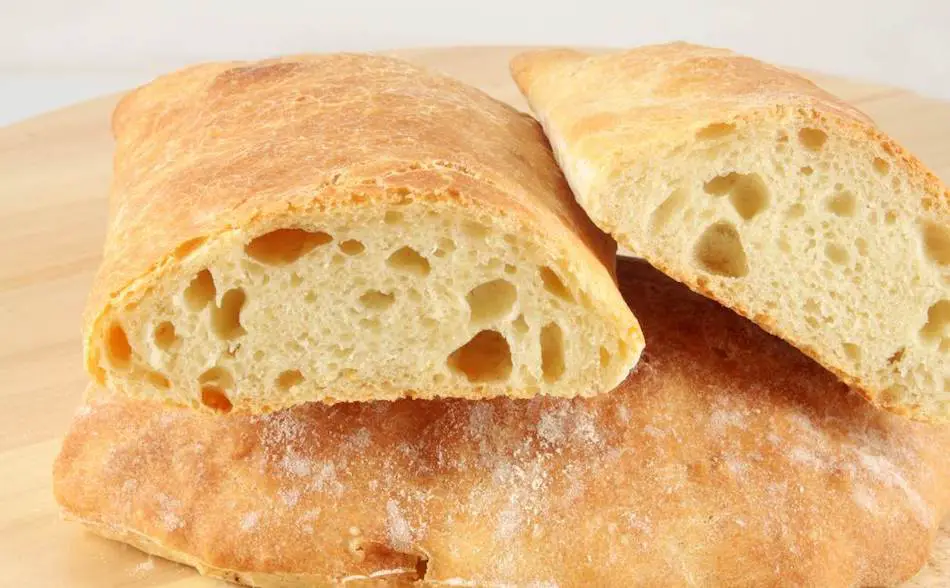
Ciabatta bread is a classic Italian staple that has been enjoyed for generations. With its chewy texture and crispy crust, it’s no wonder why it has become such a beloved bread variety. But what if we told you that you can enjoy the same delicious flavor without all the work? Enter no-knead Ciabatta bread. This method may be easier and more convenient, but what about the texture? In this article, we will explore the differences between kneaded and no-knead Ciabatta bread and help you determine which one is right for you.
Making no-knead Ciabatta bread at home is quite simple and requires only a few ingredients: flour, yeast, salt, and water. To start, mix the flour, yeast, and salt in a large bowl, then gradually add water until the dough comes together. Cover the bowl with plastic wrap and let the dough rise at room temperature for about 12-18 hours. After the dough has risen, transfer it to a lightly floured surface, shape it into a rough ball, and let it rise for another hour. Finally, transfer the dough to a preheated baking sheet, slash the top with a sharp knife, and bake in a preheated oven at 450°F for about 25-30 minutes, or until the crust is golden brown. And voila! You have a fresh, homemade loaf of no-knead Ciabatta bread.
No-Knead Ciabatta Recipe
| Ingredient | Quantity |
|---|---|
| All-purpose flour | 500g |
| Salt | 10g |
| Instant yeast | 2g |
| Water | 325ml |
Instructions
- In a large mixing bowl, combine 500g of all-purpose flour, 10g of salt, and 2g of instant yeast.
- Gradually add 325ml of water to the flour mixture, stirring until a sticky dough forms.
- Cover the bowl with plastic wrap and let the dough rise at room temperature for 12-18 hours.
- Preheat your oven to 450°F (230°C) and place a baking sheet inside.
- Transfer the risen dough to a lightly floured surface and shape into a rough ball.
- Let the dough rise for another hour.
- Carefully transfer the dough to the preheated baking sheet.
- Using a sharp knife, slash the top of the dough several times.
- Bake for 25-30 minutes or until the crust is golden brown.
- Remove from the oven and let cool before slicing and serving.
Nutritional Information
Ciabatta nutritional information for one serving (100g) of no-knead Ciabatta bread:
| Nutrient | Amount |
|---|---|
| Calories | 250 |
| Total Fat | 1g |
| Saturated Fat | 0g |
| Cholesterol | 0mg |
| Sodium | 400mg |
| Total Carbohydrates | 51g |
| Dietary Fiber | 2g |
| Sugar | 1g |
| Protein | 10g |
Please note that the nutritional information may vary slightly based on the specific ingredients and methods used. This information is meant to be used as a rough estimate only.
Whats the Taste Difference Between Kneaded and No-Knead Ciabatta?
The taste difference between kneaded and no-kneaded Ciabatta bread is minimal, if any. However, the texture difference can be noticeable.
Kneading helps to develop the gluten structure in bread, resulting in a lighter and airier texture. No-knead bread has a denser texture due to the lack of gluten development from kneading.
The taste of no-knead Ciabatta bread is still typically flavorful and chewy, with a crispy crust. The no-knead method is also a more convenient and less time-consuming way to make Ciabatta bread.
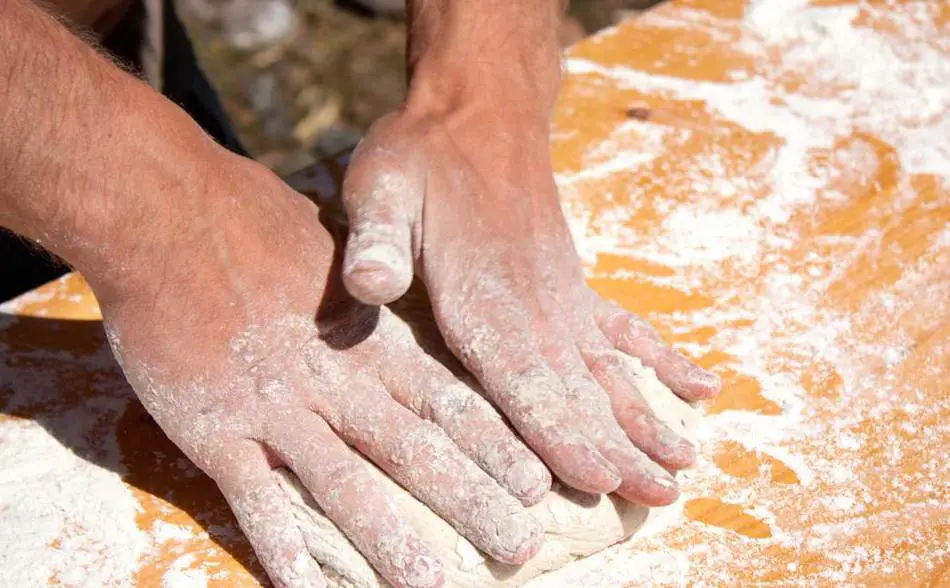
What’s the Texture Difference With No-Knead Ciabatta?
The texture difference between kneaded and no-kneaded Ciabatta bread is quite substantial. Kneading, of course, develops the gluten structure in bread, giving it that light and airy texture.
But with no-knead bread, you miss out on that crucial step and end up with a denser, heavier crumb. It’s just not the same, it’s not as refined, it’s not as elevated.
Don’t get me wrong, the no-knead method is convenient, I’ll give it that. But if you really want to take your Ciabatta bread to the next level, you’ve got to put in the work and knead that dough properly.
Ciabatta Variations
There are several variations of no-knead Ciabatta bread that you can try. Here are some popular variations:
| Variation | Ingredients |
|---|---|
| Whole Wheat Ciabatta | Replace some or all of the all-purpose flour with whole wheat flour. |
| Herb Ciabatta | Add chopped herbs, such as rosemary or thyme, to the dough. |
| Garlic Ciabatta | Add minced garlic to the dough for a savory twist. |
| Olive Ciabatta | Mix in chopped olives or olive paste into the dough. |
| Cheese Ciabatta | Sprinkle grated cheese, such as parmesan or cheddar, on top of the dough before baking. |
What type of yeast should I use?
For no-knead Ciabatta bread, it’s best to use instant yeast. Instant yeast is a fast-acting yeast that can be mixed directly into the flour without having to be dissolved in water first.
This makes it a convenient option for no-knead bread recipes, as it eliminates the need for a traditional yeast activation step. If you don’t have instant yeast, you can also use active dry yeast, but you’ll need to dissolve it in warm water before adding it to the flour mixture.
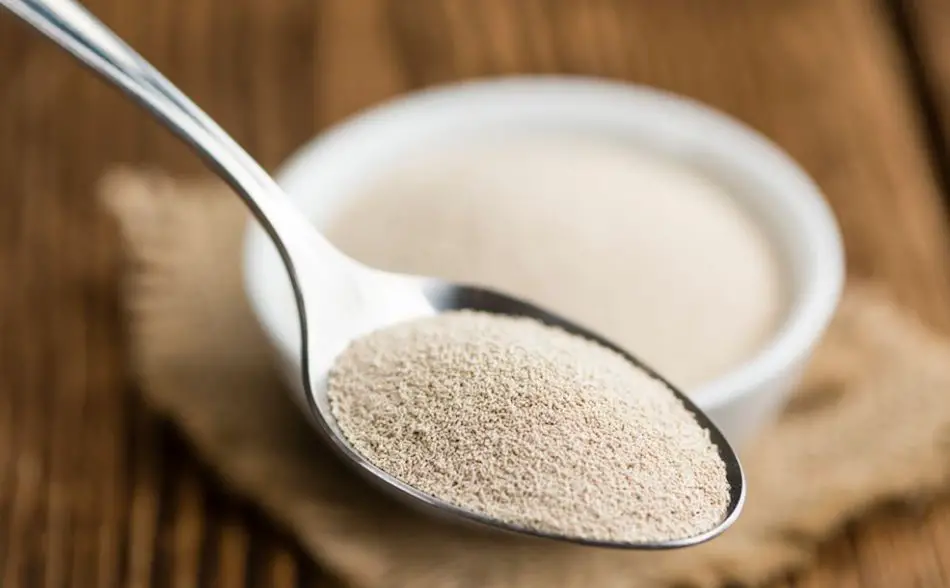
How long does the dough need to rise for?
Typically, no-knead Ciabatta dough needs to rise for about 12-18 hours. This long rise time allows the yeast to ferment and develop the flavors and textures that are characteristic of Ciabatta bread.
After the initial rise, the dough should be shaped and then allowed to rise for an additional hour or so before being baked.
The exact rise time will depend on the specific recipe, as well as the temperature and humidity in your kitchen, so it’s important to keep an eye on the dough and use your best judgement to determine when it’s ready to be baked.
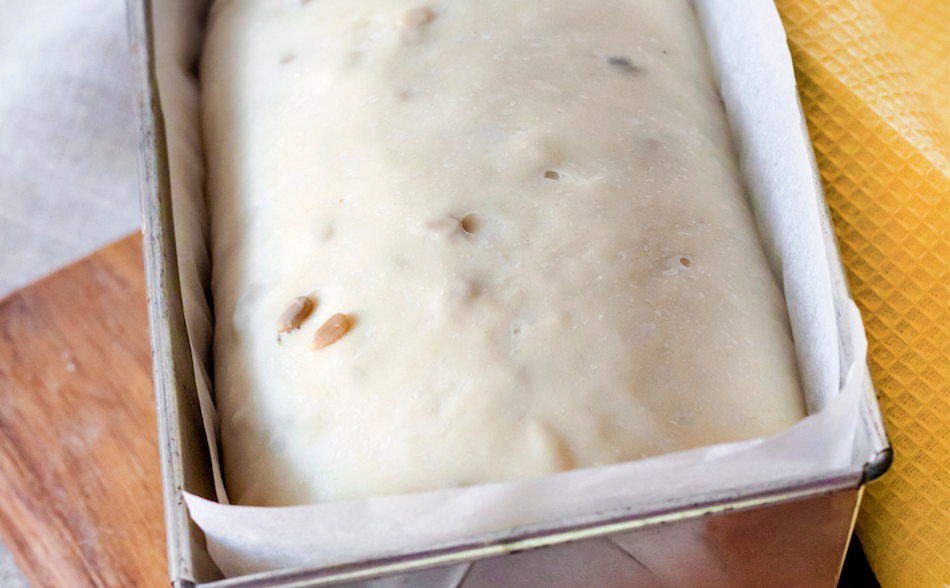
Can I use bread flour instead of all-purpose flour?
You can use bread flour instead of all-purpose flour in a no-knead Ciabatta recipe. Bread flour has a higher protein content than all-purpose flour, which gives the bread a chewier texture and a more distinct crumb structure.
If you use bread flour, you may also need to adjust the amount of water in the recipe, as bread flour tends to absorb more liquid than all-purpose flour.
Using bread flour can result in a slightly denser, chewier loaf of no-knead Ciabatta bread. If you prefer a lighter, airier texture, you may want to stick with all-purpose flour.
How do I know if the dough is ready?
Determining if your no-knead Ciabatta dough is ready can be a bit tricky, but with a little know-how, you’ll be able to get it right every time. Here’s what to look for:
- Texture: The dough should be sticky, but not so wet that it sticks to your hands. If it’s too wet, add a bit more flour.
- Appearance: The surface of the dough should be covered in bubbles. If it’s not, it needs to rise longer.
- Smell: The dough should have a tangy, slightly sour aroma, which is a sign that the yeast is fermenting properly.
If you’re still unsure, simply grab a small piece of dough and give it a gentle stretch. If it stretches easily without breaking, your dough is ready! Just remember, baking is an art, and the more you do it, the better you’ll get at determining when the dough is ready.
How do I shape the dough into a ball?
Shaping the dough into a ball for no-knead Ciabatta bread can seem intimidating, but it’s actually quite simple. Here’s what you need to do:
- Dust your work surface with flour to prevent sticking.
- Gently pour the dough onto the floured surface.
- Dust the top of the dough with flour.
- Using floured hands, fold the edges of the dough into the center until it forms a rough ball.
- Turn the dough over so that the smooth side is facing up.
- Using the palms of your hands, gently press down on the dough to shape it into a tight ball.
Remember, the key to good shaping is to handle the dough as gently as possible, as rough handling can cause the dough to lose its structure. If you’re having trouble, try watching some shaping tutorials or consulting a bread-making resource for more guidance.
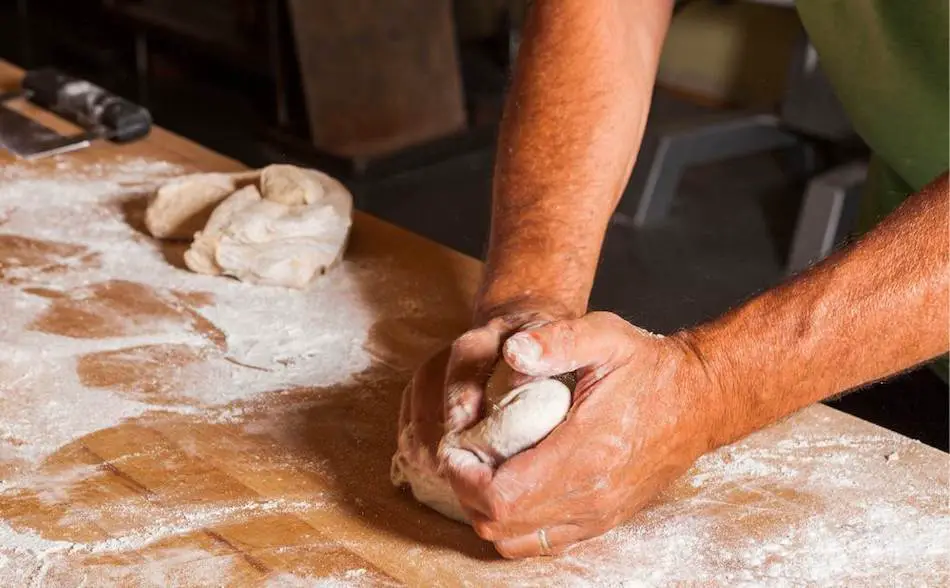
What is the ideal temperature for rising the dough?
The ideal temperature for rising no-knead Ciabatta dough is around 75°F (24°C). This temperature provides the right balance of warmth to encourage the yeast to ferment, but not so much warmth that the dough over-proofs.
Keep in mind that the exact temperature you use will depend on a number of factors, including the strength of your yeast, the ambient temperature of your kitchen, and the temperature of your ingredients.
If your kitchen is particularly cold, you may need to use a slightly higher temperature to get the dough to rise. Conversely, if your kitchen is very warm, you may need to use a slightly lower temperature to prevent the dough from over-proofing.
It’s a good idea to invest in a digital thermometer to help you monitor the temperature of your dough. This will give you the most accurate readings and help you achieve the best results possible.
How do I know when the bread is done baking?
Ah, the million dollar question! Determining when no-knead Ciabatta bread is done baking can be a bit tricky, but there are a few tell-tale signs to look for. Here’s what to do:
- Tap the bottom: Gently tap the bottom of the loaf with your finger. If it sounds hollow, the bread is likely done.
- Check the internal temperature: A thermometer inserted into the center of the loaf should read between 190°F and 210°F (88°C and 99°C).
- Look at the crust: The crust should be golden brown and crisp.
If you’re still unsure, simply bake the bread for a couple of minutes longer and then check it again. The more you bake, the better you’ll get at determining when the bread is done.
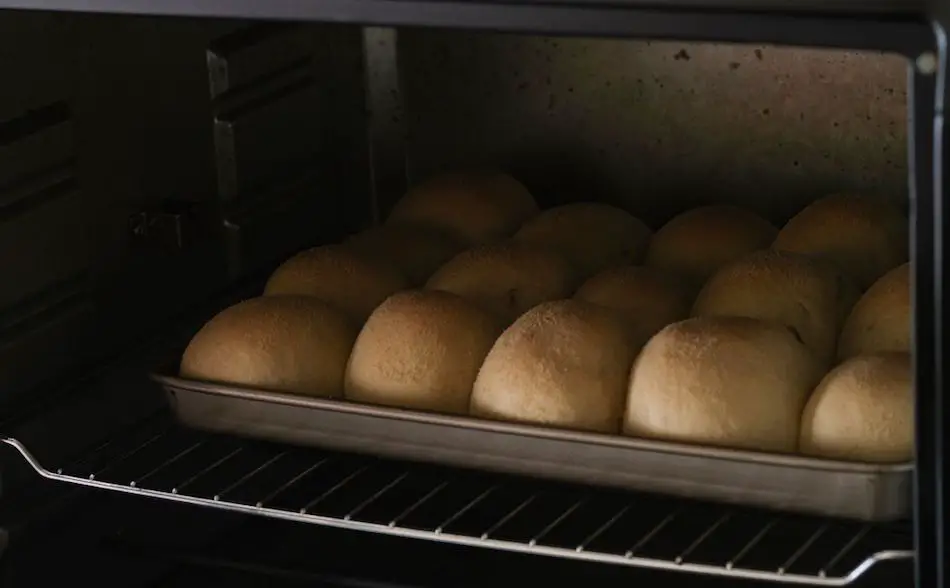
How do I store the bread once it’s finished baking?
Storing your freshly baked no-knead Ciabatta bread is crucial for preserving its flavor and texture. Here’s what you need to do:
- Allow the bread to cool completely: This is important because if you store the bread while it’s still warm, moisture will condense inside the bag and cause the crust to soften.
- Place the bread in a paper bag: This will allow the bread to breathe and prevent the crust from becoming too soft.
- Store the bread at room temperature: Ciabatta bread is best stored at room temperature, away from direct sunlight and moisture.
If you’re not planning on eating the bread within a day or two, you can also freeze it. To do this, wrap the bread tightly in plastic wrap and place it in a freezer-safe bag. When you’re ready to eat it, simply thaw the bread on the counter until it reaches room temperature.
Can I add other ingredients to the dough?
No-knead Ciabatta bread is a versatile dough that can be infused with all sorts of flavors and ingredients. Here are a few popular additions to consider:
- Herbs and spices: Try adding fresh or dried herbs like rosemary, thyme, or basil to the dough. You can also add spices like garlic or onion powder for extra flavor.
- Cheese: Grated cheese like Parmesan, Asiago, or cheddar can be added to the dough for a delicious twist.
- Nuts and seeds: Adding nuts like almonds, walnuts, or pecans, or seeds like sesame or sunflower seeds to the dough will add crunch and flavor.
- Dried fruit: Dried fruits like raisins, cranberries, or cherries can be added to the dough for a touch of sweetness.
Remember, these additions will affect the flavor and texture of the bread, so be mindful of how much you add. A little bit goes a long way! And always make sure to incorporate the additional ingredients evenly throughout the dough before shaping and baking.
Common Problems When Making No-Knead Ciabatta
Making no-knead Ciabatta bread at home can be a rewarding and delicious experience, but it can also come with its own set of challenges. Here are some of the most common problems people encounter when making this bread:
- Overproofing: This is when the dough rises too much and can result in a bread that is dense and gummy.
- Underproofing: If the dough doesn’t rise enough, the bread may turn out dense and heavy.
- Improper shaping: If the dough is not shaped correctly, the bread may have an uneven texture or an unappealing appearance.
- Overbaking: Baking the bread for too long can result in a crust that is too hard and a bread that is dry.
- Improper storage: If the bread is stored improperly, it can become stale or develop an off flavor.
Fortunately, these problems can often be prevented or corrected by following the recipe carefully, monitoring the dough as it rises, and taking the time to shape the dough correctly.
If you encounter any issues while making your no-knead Ciabatta bread, don’t get discouraged!
More Tips For Making No-Knead Ciabatta
- Flour: Use high-quality all-purpose flour or bread flour. Avoid using self-raising flour as it contains baking powder, which will affect the texture and flavor of the bread.
- Yeast: Use instant yeast, also known as rapid-rise yeast, as it will give the dough a quick rise.
- Water: Use lukewarm water to activate the yeast. Avoid using water that is too hot as this can kill the yeast and prevent the dough from rising.
- Salt: Salt is important in this recipe as it helps to control the yeast and enhance the flavor of the bread. Be sure to use a high-quality sea salt or kosher salt.
- Shaping: Be sure to shape the dough correctly to ensure a well-risen, properly formed loaf. When shaping the dough, be gentle and avoid over-manipulating it.
- Baking: Preheat your oven to a high temperature to ensure a crisp crust. Use a Dutch oven or other covered baking dish to create a steamy environment that will help the bread rise.
- Cooling: Allow the bread to cool completely before slicing or storing it. This will help the bread set and maintain its structure.
Common FAQ’s For No-Knead Bread
- Can I use a stand mixer to make no-knead bread? No, the traditional method of making no-knead bread is to mix the ingredients by hand. The gentle mixing process is what gives the dough its unique texture.
- Can I use a different type of flour besides all-purpose or bread flour? While all-purpose or bread flour works best for no-knead bread, you can experiment with different types of flour such as whole wheat, rye, or gluten-free flours. Keep in mind that the texture and flavor of the bread may vary.
- What if my dough doesn’t rise? This can be caused by a variety of factors, including the type and quality of yeast, the temperature of the water, or the strength of the flour. Make sure to follow the recipe carefully and check that your yeast is still active.
- How long does no-knead bread take to make? The total time required to make no-knead bread will depend on the recipe, but it typically takes several hours to prepare, including the rising time. The baking time is usually around 30-40 minutes.
- How should I store no-knead bread once it’s baked? No-knead bread is best stored at room temperature in a paper or cloth bag. Avoid storing it in a plastic bag as this can cause the bread to become moist and spoil faster. You can also freeze the bread for up to 3 months.
- Can I add other ingredients to the no-knead dough? Yes, you can add ingredients such as herbs, spices, cheese, or olives to the dough. Just be sure to add them after the initial mixing process, and fold them gently into the dough.

